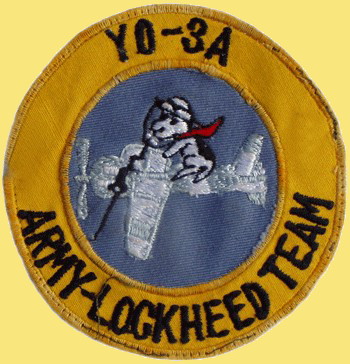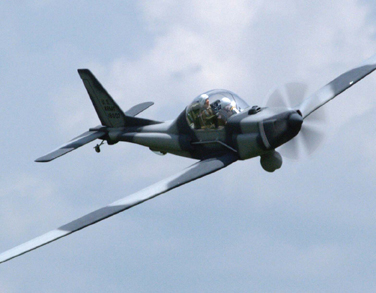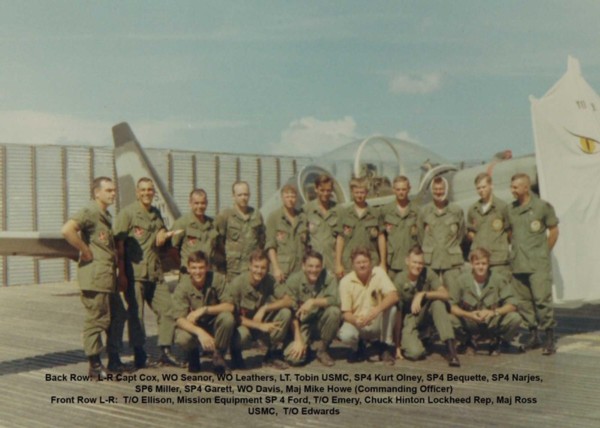History of the 220th Aviation Company—1970
Overview
by Gene Wilson
On 7 January MAJ Gebhardt passed command to MAJ John H. Stokes III.
All platoons were based and started their days at Phu Bai. The 1st Platoon supported the 1st Brigade, 5th Mechanized Infantry Division and adjusted Naval Gun Fire for the Seventh Fleet; its area of operations was Quang Tri Province and the DMZ. The 2nd and 3rd Platoons supported the 101st Airborne Division and the ARVN 1st Infantry Division in the A Shau Valley and surrounding regions in Thua Thien Province. The 4th Platoon supported the 108th Field Artillery Group along the DMZ to the border of Laos.
NOTE: After the 3rd Marine Division left Dong Ha and the USMC began its departure from I Corps in late 1969, the 220th was apparently no longer allowed to perform as FACs for Air Force aircraft. [Much like the "loss" of the CV-2 "Caribou" to the Air Force in 1966, when the Air Force pulled another "trump card" (showing their "Aces" —pun intended) with XXIV Corps in taking the capability of Forward Air Control away from the Army, the real loss was felt by units on the ground when support at the time and place it was needed was simply not always available in the immediate area.]
The USS New Jersey had also departed Vietnamese waters in 1969 although there were some other ships still in the area. However, in the effort toward Vietnamization, during 1970 the control of the coastal and high sea patrols was relinquished to the Vietnamese military forces—so the Catkillers naval gunfire support missions were ended.
On 12 March the 101st Airborne Division launched Operation Texas Star reestablishing Fire Support Base Ripcord in the A Shau Valley with the intention of attacking and cutting the NVA logistical "pipeline" along the Ho Chi Minh Trail. The 2nd and 3rd Platoons were involved in this operation from start to finish.
On 26 March BG George Putnam, CG 1st Aviation Brigade, sent a "birthday" letter to the 220th acknowledging its fifth anniversary Unit Day on 31 March.
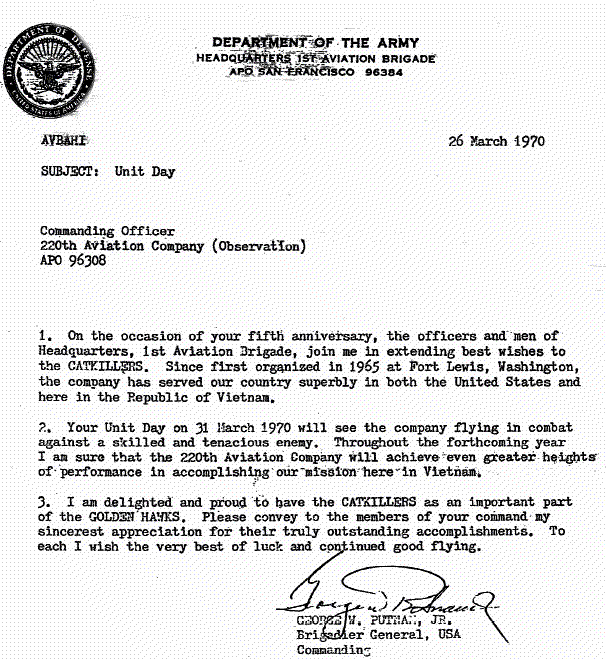
On 23 May WO1 Larrie John Landersheim was lost near Khe Sanh in a Helicopter Non-Crew Member status. He was aboard a Special Forces C & C aircraft that was at altitude reconnoitering an area for an operation that he would be supporting at a later date. When the aircraft was hit by ground fire and crashed, all members aboard the aircraft perished.
In the later part of June a section of three YO-3A Aircraft and crews was attached to the 220th at Phu Bai. These low altitude "Silent Stealth" night reconnaissance aircraft worked in the DMZ for the next six months into January 1971; their missions were normally flown at an optimum altitude of about 800´ MSL. Although these aircraft were never actually intended to be military aircraft, the primary mission of the YO-3A by the Army was to see what they could do to interrupt and ultimately destroy enemy night operations. Another group of YO-3As worked in southern Vietnam out of Long Thanh North. These aircraft were not armed with weapons and their only protection was their silent operation. However, the YO-3A was "armed" with a Night Vision Aerial Periscope, an Infrared Illuminator and a Laser Target Designator in its "arsenal" of mission equipment. There is much more information about the YO-3A Unit in the link on www.catkiller.org.
NOTE: Kurt Ohney, who was a 220th Crew Chief with the YO-3A section and plans to be at our 2012 reunion in Seattle, is the web master for the YO-3A site and should be able to answer questions relating to the YO-3A and its working with the 220th in its mission in the I Corps area.
When the all out attack began by the NVA, during 1-23 July the 2nd and 3rd Platoons provided a major support effort to the 3rd Brigade, 101st Airborne Division at Fire Support Base Ripcord. This action had been considered a covert action because the FSB was being rebuilt during the Cambodian Incursion of May 1st through June 30th Campaign in the III Corps area of operations. The Operation had also apparently been handled much like a classified activity at that time. The media had been discouraged in reporting events of the operation so that there would be lesser opportunity in any comparison of controversy as were the events of Hamburger Hill during the previous year. However, it was not known that the entire operation was being observed by an NVA Division of approximately 25,000 troops — about a ten to one ratio of opposing forces. Due to its location FSB Ripcord was totally dependent upon helicopter support for movement, resupply and its eventual evacuation — it was out on a limb from the start.
When the Fire Support Base Ripcord Association was founded in 1985, some stories of the activities of that action then began to appear. Since then, there have been a couple of good books written that pretty much tell the story of Operation Texas Star and FSB Ripcord; RIPCORD — Screaming Eagles under Seige, by Keith Nolan, and Hell on a Hilltop, by MG (Retired) [then COL, commander of the 3rd Brigade, 101st Airborne Division], Benjamin Harrison. Thus far, aside from the listing of the 2nd and 3rd Platoons of the 220th "Catkillers" as supporting units, except for the awards of the DFC that are indicated below, reports of this action that I have found and read do not include any particular mention of the 220th Aviation Company.
On 7 July MAJ Stokes passed command of the Company to MAJ Jack L. Guinn.
During the period of 11-23 July, ten 220th aviators were recognized for their support of Fire Support Base Ripcord by the award of the Distinguished Flying Cross. It should be noted that this acknowledgement did not occur until 31 January 1971, some six months later, and it apparently was processed from the 101st Airborne Division through the 1st Aviation Brigade for the recognition of the 220th aviators by the awards.
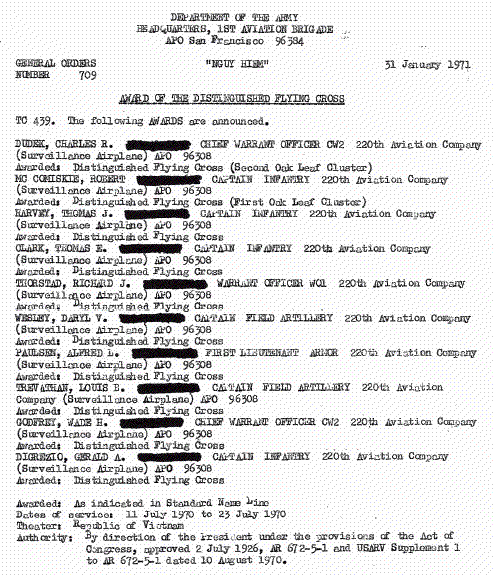
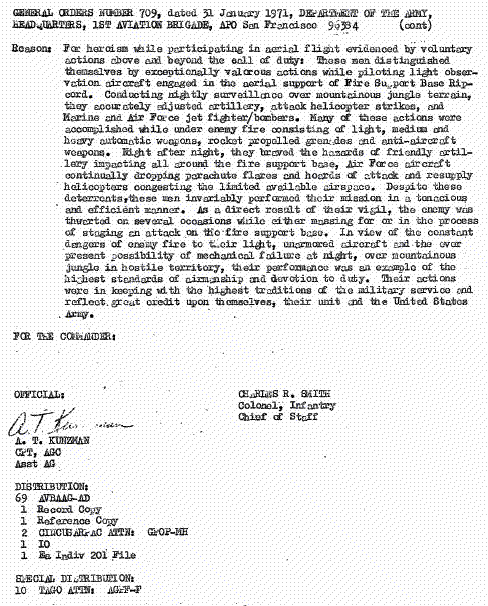
On 30 July WO1 Lee Raymond Peters and 1LT Forrest Hughy Hollifield, 108th Artillery AO, were KIA in a crash landing at Dong Ha. (Cause unknown)
NOTE: Other than the above, I have been unable to locate very little other information for the entire period of MAJ Stokes´ and MAJ Guinn´s tours of duty with the 220th. We would like to hear from anyone who served with the 220th during 1970 who may be able to provide some detailed activities for the Historical Index.
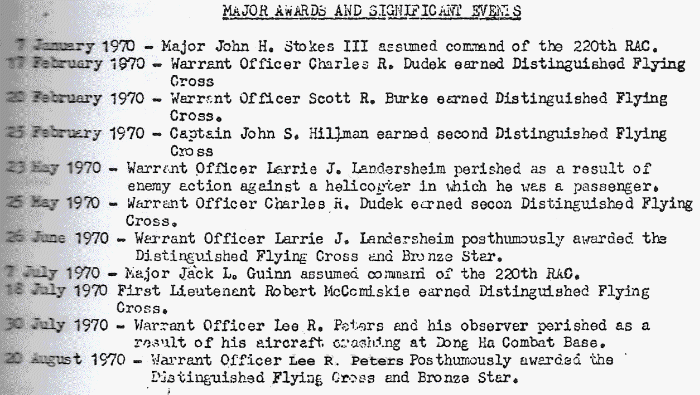
I have been able to talk with Wade Godfrey, then a CWO with the 220th, who served with MAJ´s Gebhardt, Stokes and Guinn, and took on the KA-39 Camera project to serve as a back-up for verification of VR reports. Wade became the expert in photo imagery and even convinced the Air Force and other services that the Army had the capability to provide such support in a highly professional manner at a lesser cost than that of higher performance aircraft. I find it amazing that higher headquarters intelligence folks in G-2 sections continuously seemed to have had trouble believing reports by our 220th pilots and their observers. (In the Spring of 1967, I had the occasion of flying high ship to then CWO Jay Snell of our 3rd Platoon in Da Nang with two Bird COLs, the G-2 and G-3 of Hq III MAF in our back seats, to show them that a road was truly being built from Laos along the Ho Chi Minh Trail into the A Shau Valley — just as Jay had reported it and we had forwarded the report from our operations. The comment from one to the other upon landing, "Well, I´ll be damned!" They ARE building a road back there!")
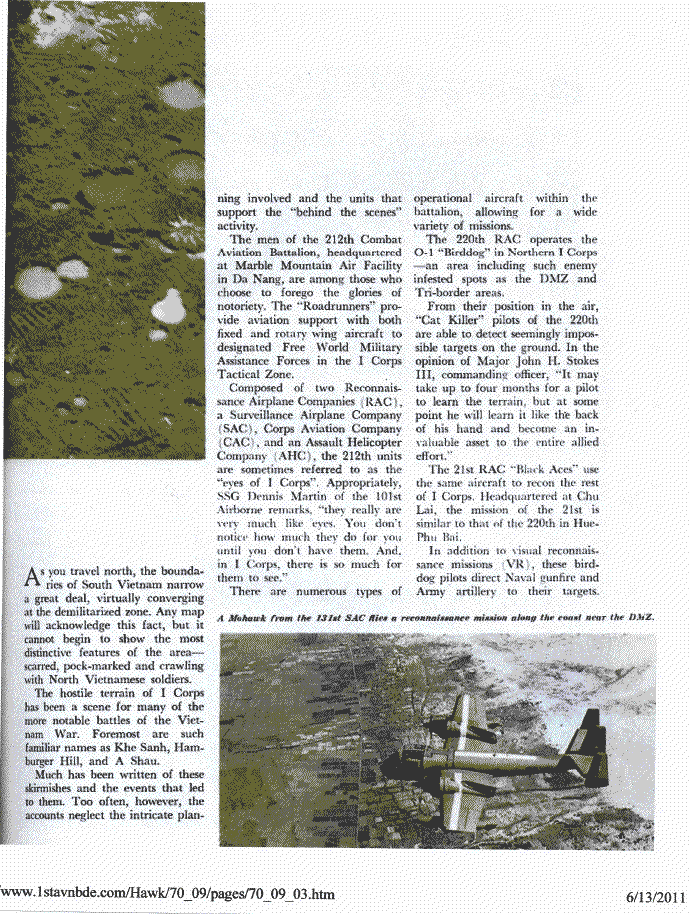
During this year there were 9,046 sorties flown with four platoons and the Company Headquarters for a total of 15,857 hours. Unit history files indicate that there appears to have been periods of significant under-strength of both Aviators and Enlisted, particularly in the crew chief and maintenance support personnel, throughout the year. This situation exemplifies the dedication of the Enlisted Men who served the 220th Aviation Company.

